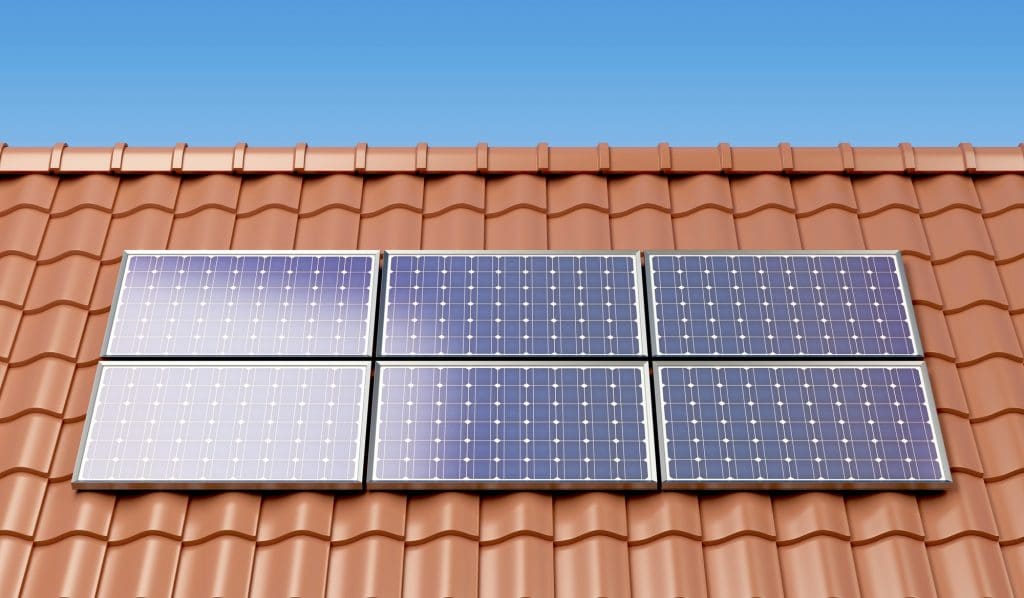If you’re looking to improve your frugal lifestyle, it is important to examine all opportunities to cut down on wasting money. There are big opportunities that are the most visible – your housing cost, transportation costs, grocery costs, restaurant costs, entertainment costs, financing interest costs, and so on.
Other items are less visible. One expense that tends to get overlooked by a lot of people – even those who are experienced in the frugal lifestyle – is the electric cost.
It is easily overlooked because it is very inconspicuous. We do not choose how much to spend on electricity. We just turn on the light switch, the air conditioner, and so on.
For some appliances, we do not even have to do that. For example, we do not have to make a conscious decision on when to turn on the fridge or the water heater.
They are always on in the background. This “operating in the background” nature is what makes the electric bill such an overlooked expense item – it is out of sight, out of mind.
When it comes to your electric bill, a small amount saved every month could snowball into a large chunk of money down the road thanks to the magic of compound interest.
Here is a summary of Major Strategies to Save on Electric Bill:
| Electric Bill Saving Strategy | Cost of Implementation | Impact on Your Lifestyle | Annual Savings on Electric Bill |
| Turn up the Thermostat of Your Air Conditioners | $0 | Low – Medium | $100 |
| Cool Down with Fans Instead of Air Conditioners | $0 | Low – High | $230 |
| Turn Down the Thermostat of Your Space Heaters | $0 | Low – Medium | $90 |
| Insulate Your House | $500 – $1,000 | None | $70 |
| Weather Strip Your Windows and Doors | $150 – $750 | None | $50 |
| Lower the Temperature of Your Water Heater | $0 | None | $36 – $61 |
| Wash Your Clothes in Cold Water Instead of Hot Water | $0 | None | $170 |
| Air Dry Your Clothes Instead of Using a Clothes Dryer | $0 | Low – Medium | $80 |
| Replace Old Electric Appliances with ENERGY STAR Certified Ones | $0 when compared to non certified appliances | None | $120 |
| Shop for a Better Price of Electricity | $0 | None | $150 |
| Install Solar Panels on Your Roof | $11,700 | None | $650 – $2,200 |
How to Save on Electric Bill
You can save money on electric bills by reducing your electric consumption, reducing the price you pay for electricity, and generate your own electricity. For the average home, just reducing your electric bill by 30% each month could lead to an extra $105,000 in your retirement fund 30 years from now.
To cut down on electric consumption, try insulating your house, weather stripping your windows and doors, going easy on air conditioning and heating, and more. To reduce the price you pay for electricity, shop around for a better rate. To generate your own electricity, install solar panels.
Related: How to Save Money on Water Bill (10 Easy Ways)
According to the United States Energy Information Administration, the top 3 categories of residential electricity consumption are – air conditioning (accounts for 17% of all electricity usage by a household), space heating (15% of all electricity usage,) and water heating (14%.) Other major categories include lighting, refrigerators, and clothes dryers.
As a result, these are the categories you should focus your efforts on when trying to cut down on your electric consumption.
At the same time, there is also a lot of money to be saved by reducing the price you pay per unit of electricity as well as the amount of electricity you actually buy from your utility company. So do not lose sight of that part of the equation either.
Let us look at the specific actions you can take to accomplish these goals.
Save on Electric Bill with Thermostat of Space Heaters
After air conditioning, space heating is the second largest use of residential electricity. On average, it accounts for 15% of your total electric usage. For the average home electric bill of $1,500 per year, the cost of space heating amounts to $225 per year.
By turning down your thermostat during the colder months, you can substantially reduce that cost. For example, wearing a few layers of warm fleece at home will enable you to turn down your thermostat to 65 degrees or 60 degrees.
Many people keep their thermostats high because they have cold feet. If that is the case for you, just wear a pair (or two) of fleece socks at home to keep your feet warm.
When you are away from home, you can turn your thermostat down to 45 or 40 degrees. All you need to do is to make sure your water pipes do not freeze and burst. There is no need to keep a temperature much higher than freezing when you are not around.
At night when you go to bed, try sleeping with 2 comforters doubling up to keep you extra warm. That way you can turn your thermostat down to 55 or even 50 degrees at night.
With these 3 simple tactics – set your thermostat to 65 or 60 degrees when you are at home, turn your thermostat down to 45 or 40 degrees when you are away from home, and turn down your thermostat to 55 or 50 degrees when you go to bed – you can save 30% to 40% of your electric cost for space heating.
For the average space heating cost of $225 per year, a 40% saving amounts to $90 in saving per year.
Save on Electric Bill by Insulating Your House

Continuing with our focus on reducing cooling and heating cost, another low hanging fruit in this area is insulation.
According to one study, 90% of all single-family homes in the United States are under-insulated. That means the chance is, your house is under-insulated as well.
By adding insulation materials to your walls, attics, floors over crawl spaces, and accessible basement rim joists, you can slow down the transfer of heat out of your house during the cold months and that into your house during the hot months.
There are many different types of insulation materials (mineral wool, foam, fiberglass, cellulose, natural fibers, denim, radiant barrier, and more) and methods of application (rolls of batting, loose-fill, spray-in foam, and more).
Which material and application method to choose depends on your house and your needs. The best way to decide is to find and consult a local insulation contractor.
Properly insulating your house can reduce your cooling and heating costs by 15%. Given that air conditioning and heating on average account for 32% (17% + 15%) of your total electric bill or $480 per year, a 15% reduction amounts to a saving of a bit over $70 per year.
When it comes to the cost of insulating a house, it varies widely depending on the size of the house, the location, and the type of insulation used. But on the low end, it is possible to insulate a house for $500 to $1,000.
If you spend $500 insulating your house and end up saving $70 per year on electric cost, you will earn back your initial investment in a bit more than 7 years. If you spend $1,000 insulating your house, your payback period is a bit more than 10 years.
Save on Electric Bill with Weather Strip
Another great way to slow down the transfer of heat out of your house during the cold months and that into your house during the hot months is by weather stripping the windows and doors of your home. This is especially effective for the more drafty houses.
By carefully applying weather strips to your windows and doors, you can drastically cut down the amount of cold and hot air that flows into and out of your home. The end result is better insulation from the outside world and less need for air conditioning and heating.
According to the United States Department of Energy, by weather stripping your windows and doors, you can save up to 10% of your air conditioning and heating costs. For the average air conditioning and heating costs of $480 per year, a 10% saving amount to almost $50 ($48) per year.
As for cost, if you hire professional contractors to install weather stripping, expect to pay as much as $762 for both labor and materials. On the other hand, if you opt for the “do it yourself” route, the cost comes down substantially. In that case, you are only paying for the cost of the materials, which can be less than $150 for one door and several windows.
For a frugal person like you, the “do it yourself” route of weather stripping is probably the more attractive option. The following video does a good job of showing how to install foam and V-seal weather stripping yourself.
All you have to do is to follow these simple steps:
- Clean the surface of the door or window frame before you install the weather stripping
- Measure the lengths of the edges of the door or window where you are going to apply the weather stripping tape and cut the tape accordingly
- For foam weather stripping – peel off the backing of the foam tape and apply the tape to the edges of your door or window
- For V-seal weather stripping – fold the middle of the V-seal tape to get a nice V shape, then peel off the backing of the V-seal tape and stick the tape to the edges of your door or window
Save on Electric Bill with Your Water Heater
Water heating is the third largest use of electricity, accounting for 14% of all residential electricity usage.
Many water heaters are set to a water temperature of 140 degrees Fahrenheit. That temperature is unnecessarily high.
According to the United States Department of Energy, by setting your water heater temperature to 120 degrees, you can save $36 to $61 annually in energy cost.
Save on Electric Bill with Laundry

Another way to save on water heating costs is to wash and rinse your clothes in cold water instead of hot water.
If you use hot water to wash your clothes, 90% of the energy required to do a load of laundry goes into heating the water. That is a wasteful practice and a big opportunity for cutting down on energy use.
How much can you save this way? Let us do the math. According to a study:
- If you wash clothes in hot water and rinse in warm water, you are going to use an average of 4.5 kWh per laundry load, which at a cost of $0.1326 per kWh (the average price of electricity in the US) will cost you $0.60 per load
- If you wash clothes in cold water and rinse in cold water, you are going to use an average of 0.3 kWh per laundry load, which at a cost of $0.1326 per kWh will cost you $0.04 per load
By switching from hot and warm water to cold water, you will be saving $0.56 per laundry load.
According to the United States Environmental Protection Agency, the average American household washes about 300 loads of laundry each year. At $0.56 saving per load, you can potentially save around $170 ($168) per year by switching from hot water to cold water laundry.
| Wash / Rinse Settings | Electricity Used per Load (kWh) | Cost per Load | Cost per Year (300 Loads per Year) |
| Hot Water / Warm Water | 4.5 kWh | $0.60 | $180 |
| Cold Water / Cold Water | 0.3 kWh | $0.04 | $12 |
| Saving from Switching to Cold Water | 4.2 kWh | $0.56 | $168 |
Save on Electric Bill with Air Dry

Besides hot water laundry, the electric clothes dryer is another major source of electricity usage. The typical dryer uses around 3,000 watts of power. Assuming 40 minutes of dryer use for each load of laundry, we are talking about 2 kWh of electricity used per laundry load just for the dryer.
At a cost of $0.1326 per kWh of electricity, it will cost $0.27 to dry a load of laundry using an electric dryer.
At 300 loads of laundry per year, the total dryer electricity cost amounts to $80 per year.
If you stop using the electric dryer completely and just hang up your clothes to dry them instead, you will be saving $80 per year in electric cost.
The good thing about this is, there is no upfront investment required. Better yet, avoiding electric dryers will make your clothes last longer and thus save you even more money.
Save on Electric Bill with ENERGY STAR Certified Appliances

I am sure you have seen it – that blue ENERGY STAR square label on electric appliances of all kinds such as washers, dryers, and fridges. Have you ever wondered why it is there and what it means?
ENERGY STAR is a program run by the United States Environmental Protection Agency and the Department of Energy that promotes energy efficiency.
An ENERGY STAR label on an appliance means that the appliance meets energy saving standards set forth by the Environmental Protection Agency and the Department of Energy. The specific energy saving standard of ENERGY STAR depends on the type of appliance:
- Clothes Washers: 25% less energy usage (and 40% less water usage) than standard models
- Clothes Dryers: 20% less energy usage than standard models
- Dishwashers: 5% less energy usage (and 15% less water usage) than standard models
- Dehumidifiers: 15% less energy usage than standard models
- Refrigerators: 9% less energy usage than standard models
- Freezers: 10% less energy usage than standard models
- Air Conditioners: 13% less energy usage than standard models
- Air Purifiers: 40% less energy usage than standard models
Less energy usage means a lower electric bill. How much lower? The ENERGY STAR program has provided some estimates:
- Clothes Washers: $40 annual electric bill savings (and 3,015 gallons annual water savings) compared to standard models
- Clothes Dryers: $16 annual electric bill savings compared to standard models
- Dishwashers: $2 annual electric bill savings (and 161 gallons annual water savings) compared to standard models
- Dehumidifiers: $17 annual electric bill savings compared to standard models
- Refrigerators: $6 annual electric bill savings compared to standard models
- Freezers: $4 annual electric bill savings compared to standard models
- Air Conditioners: $11 annual electric bill savings compared to standard models
- Air Purifiers: $27 annual electric bill savings compared to standard models
The following table summarized the energy savings standards, electric bill savings, average lifespans, and total lifetime savings of various ENERGY STAR certified appliances based on data from the ENERGY STAR program.
Energy Savings, Electric Bill Savings, Average Lifespans, Total Lifetime Savings of ENERGY STAR Certified Appliances
| Energy Savings vs. Non Certified Models | Annual Electric Bill Savings vs. Non Certified Models | Average Lifespan | Total Lifetime Savings | |
| Clothes Washers | 25% | $40 | 11 years | $415 |
| Clothes Dryers | 20% | $16 | 12 years | $160 |
| Dishwashers | 5% | $2 | 10 years | $20 |
| Dehumidifiers | 15% | $17 | 7 years | $100 |
| Refrigerators | 9% | $6 | 12 years | $72 |
| Freezers | 10% | $4 | 11 years | $44 |
| Air Conditioners | 13% | $11 | 9 years | $99 |
| Air Purifiers | 40% | $27 | 9 years | $215 |
| Potential Total Annual Savings | $123 |
As you can see from the table above, if you replace all your non ENERGY STAR appliances with ENERGY STAR ones, you can potentially save more than $120 (or more if you have more than one air conditioners or more than one refrigerators) per year. That is a nice chunk of change.
It is great that ENERGY STAR certified appliances can save you money on your electric bill, but what about the cost side of the equation? Are ENERGY STAR certified appliances more expensive than non certified models?
Back in the days, 10 or 20 years ago, ENERGY STAR certified appliances did carry a price premium – they were on average $30 to $200 more expensive than non-certified models. But that is no longer the case.
Over the last 10 years, consumer demands for ENERGY STAR certified appliances have been growing nonstop. In response, manufacturers have been designing and making so many ENERGY STAR certified models that they are no longer any more expensive than comparable non ENERGY STAR models.
That means that nowadays when one of your old appliances gives out and you need to buy a new appliance, there is no reason not to buy an ENERGY STAR certified model. You will get to pay less for your electric bill and you do not need to pay more for the appliance itself. It is all upside and no downside.
What about the situation where your existing appliance is still working fine – should you buy a new ENERGY STAR appliance to replace your existing, perfectly functioning non ENERGY STAR appliance? Would the savings in electric bill be worth the cost of the new purchase?
Well, the answer is, it depends – on the purchasing price of the new appliance, the expected lifespan of the new appliance, and how much money you expect to save on your electric bill.
Let us do the math for a few examples.
Example 1: Say you are interested in this LEVOIT Smart Wi-Fi Air Purifier for Large Room.
It is ENERGY STAR certified and it sells for less than $200. Given that the average lifespan of an air purifier is 9 years, the per year cost of this new air purifier would be about $22 ($200/9 = $22.)
On the other hand, from our table above we see that the average per year electric bill savings from an ENERGY STAR air purifier is $27.
For a per year cost of $22, you are gaining a per year savings of $27. So you should go ahead and replace your existing air purifier with this new one.
Example 2: You are interested in this hOmeLabs Compact Countertop Dishwasher.
It is ENERGY STAR certified and it sells for less than $300. Given that the average lifespan of a dishwasher is 10 years, the per year cost of this new air purifier would be about $30 ($300/10 = $30.)
On the other hand, from our table above we see that the average per year electric bill savings from an ENERGY STAR dishwasher is $2.
For a per year cost of $30, you are gaining a per year savings of only $2. So it does not make any financial sense to replace your existing, perfectly working dishwasher with this new one. It is better to wait until your current dishwasher breaks down before you replace it with a new one.
Save on Electric Bill with Solar Panels

We have all heard about how solar power is getting more and more competitive as the price of solar panels is getting more and more inexpensive. If you live in your own house, it is time to give solar power a serious consideration.
The price of solar panels is cheaper than ever. And when you install a solar system you can also get tax credits from the government. The exact price of a residential installation of solar panels will depend on your location. The typical home solar installation is a 6 kW system.
The average total price (panels + installation labor) of a 6 kW residential solar system is $11,722 after claiming the 26% solar tax credit.
And depending on your specific location and how much sunlight you get during the year, your total savings on your electric bills over 20 years from solar power range from less than $13,000 in Washington to over $45,000 in Massachusetts. That is an annual savings of $650 to $2,200.
To get a more specific estimate of your savings on electric bills from solar panels, we recommend that you use one of the many solar power calculators available on the Internet.
How Much Money You Can Save on Your Electric Bill
While the potential savings on your electric bill will probably not be as big as that on your housing cost or food costs, it could still be very substantial. According to the United States Energy Information Administration, the average residential price of electricity in the US was 13.26 cents per kilowatt hour as of July of 2020.
If you live in New England you will have to pay significantly more – 56% more, in fact – 20.65 cents per kilowatt hour. Same if you live in New York (18.73 cents per kilowatt hour) or California (20.11 cents per kilowatt hour.)
Meanwhile, the average annual electricity consumption for a US residential utility customer was 10,972 kilowatt hours (kWh), an average of about 914 kWh per month.
That means the average electric bill in the United States is almost $1,500 per year or over $120 per month. If you live in New England, you are paying almost $2,300 per year on average – that is almost $200 per month. For New Yorkers, it is $2,100 per year and $170 per month. For Californians, $2,200 per year and $180 per month.
By turning up the thermostat of your air conditioners, weather stripping your windows and doors, lowering the temperature of your water heater, and other simple actions we will go into more detail later on, you can easily cut your electric bill by 20% each month.
For the typical household, that amounts to over $24 extra money per month and almost $300 per year. If you become more diligent and aggressive in your actions, it is not that hard to save 30%, which means over $36 saving per month and almost $450 per year.
While $300 or even $450 saved per year does not seem that much at a first glance, it adds up quickly in the long run, especially if you invest your savings. Put your savings in an index fund investment and let it compound for a few decades and we are talking about a significant amount here.
Let us do the math. First, let us assume your electric bill – and hence your savings on electric bill – will increase by 2% every year as a result of inflation. So if you save $300 (20% of the average electric bill) on electric bills in the first year, you will be saving $306 ($300 + $300 * 2%) in the second year, $312 in the third year, and so on.
Also, let us assume your investment has an annual return rate of 10% – which is the historical return rate of the stock market index Standard & Poor 500. How much do you think you will have after 30 years?
You will have almost $70,000 after 30 years. Amazing isn’t it? That is the magic of compound interest. Small things just snowball into something much bigger given enough time.
And if you save $450 (30% of the average electric bill) per year, assuming the same rate of inflation and investment return, you will have almost $105,000 after 30 years.
More than one hundred thousand dollars in extra money. That is a nice sum for your retirement fund. And all that just by saving 30% on your electric bill. How do you do that? Let us find out.

Benjamin is a certified financial advisor, with over 10 years of experience in the industry. He is knowledgeable about various business and financial topics, such as retirement planning and investment management. Ben has been recognized for his work in the financial planning industry. He has also been featured in various publications.

